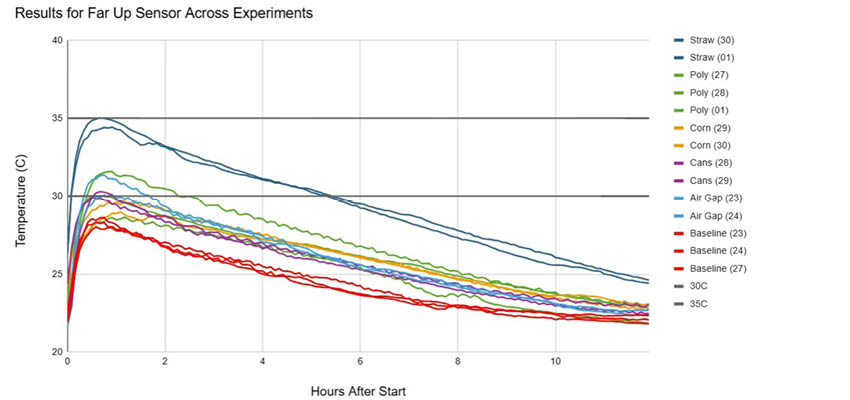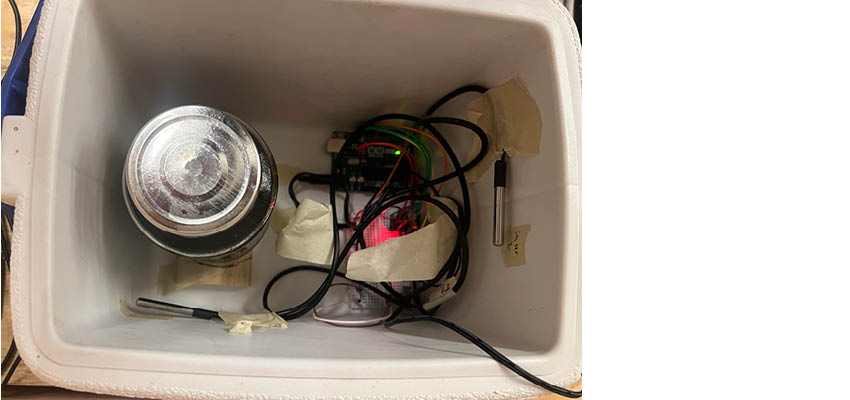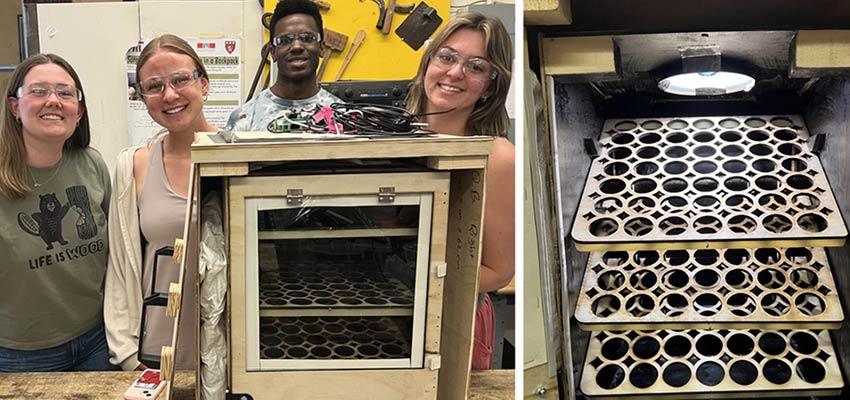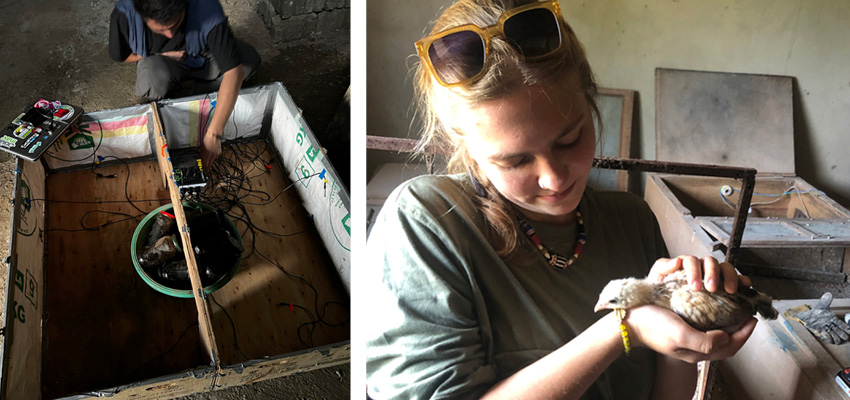
A safe and affordable off-grid chicken brooder designed to reduce losses and improve livelihood outcomes for poultry farmers in developing countries
MIT D-Lab class
Introduction to Energy in Global Development
Community partner
African Diaspora Council of Switzerland - Branch Cameroon (CDAS - BC)
Country
Cameroon
Student team
MIT students unless otherwise noted.
- Gabriel Balzaretti - MBA '25
- Kathleen Bailey - Chemical Engineering '24
- Nick Gilligan - Physics '26
- Cameron Kokesh - Mechanical Engineering '24
Background
The domestic poultry sector plays an important role in Cameroon's economy and food security. After the government imposed import restrictions on frozen poultry in 2005, domestic production grew substantially, accounting for 4% of Cameroon's GDP and 42% of total meat production in 2018. Today, the domestic poultry industry provides jobs and food to several farmers and communities.
Small-scale farmers face energy and safety challenges when brooding chicks. Chicks require an ambient temperature of 31-35°C in their first three weeks since they are unable to self-regulate their body temperature. Traditionally, small-scale farmers use open fires to heat the chicks. This practice is dangerous as well as energy and labor intensive.
Problem framing
MIT has implemented a low-cost, energy efficient, and safe brooding system that consists of motorcycle boxes and thermal batteries for chicken brooding. However, this system requires a change of thermal batteries overnight to maintain the ideal temperature. Consequently, farmers need to wake up at night and suffer from sleep deprivation. The objective during the semester was to design a system with long-lasting heat release that is affordable, easy to assemble, and scalable to 200 chicks.
Research areas
The team focused on optimizing two key components: the thermal battery material and box insulation.
1. Thermal Battery: The team tested the performance of affordable and locally available materials for thermal batteries. The materials tested include beeswax, water, oil, and soap. Even though it is more expensive, beeswax performed better than the other materials due to its phase-change material properties.
2. Insulation: The team tested the effect of various affordable and locally available insulation materials on the inside temperature of the box. The materials tested were straw, polypropylene, corn cobs, aluminum cans, and air. Straw demonstrated the best performance out of all materials.


Conclusion and future work
The recommended design combines a reusable beeswax thermal battery with straw insulation lining the motorcycle box walls and lid. Field testing in summer 2024 will validate local material availability, construction feasibility, and live chick brooding performance compared to fire pits. Opportunities exist to optimize ventilation, integrate thermal mass, and design an insulated viewing window in the lid. This low-cost, locally-sourced solution aims to improve brooding conditions and reduce chick mortality for small-scale farmers.
Contact
Dan Sweeney, MIT D-Lab Lecturer and Research Scientist










